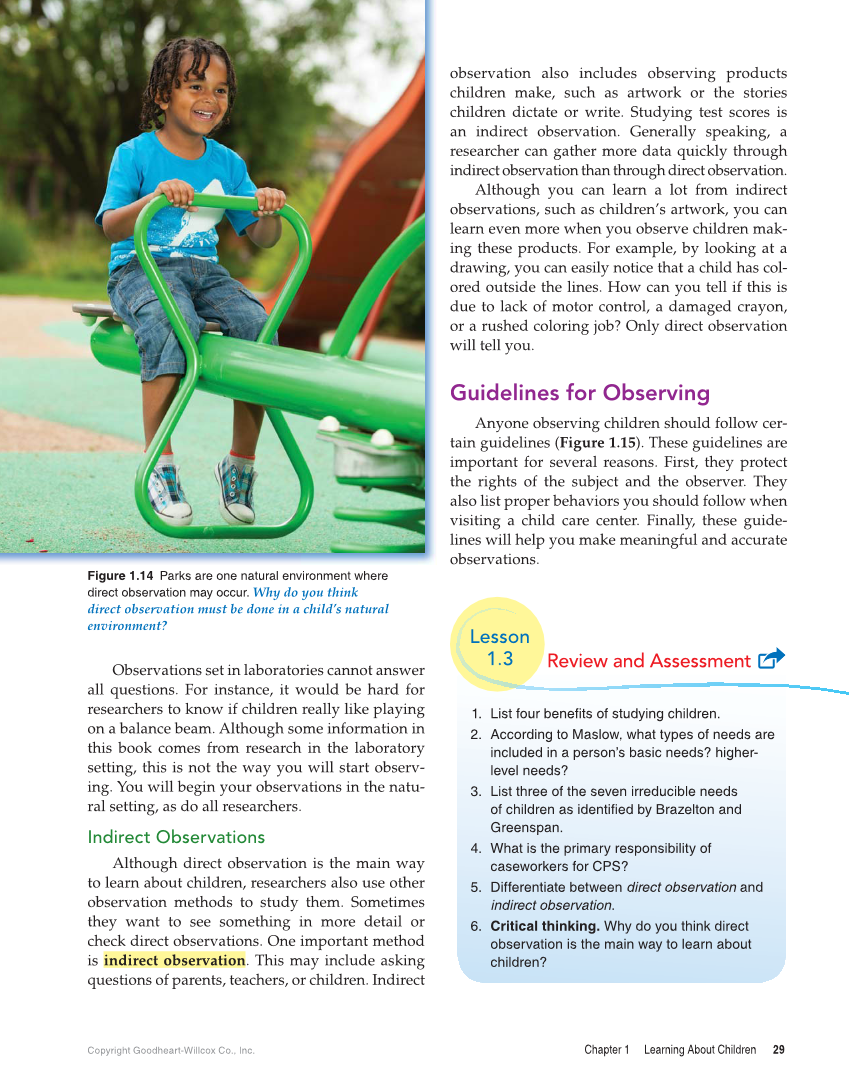Copyright Goodheart-Willcox Co., Inc. Chapter 1 Learning About Children 29 observation also includes observing products children make, such as artwork or the stories children dictate or write. Studying test scores is an indirect observation. Generally speaking, a researcher can gather more data quickly through indirect observation than through direct observation. Although you can learn a lot from indirect observati ons, such as children’s artwork, you can learn even more when you observe children mak- ing these products. For example, by looking at a drawing, you can easily notice that a child has col- ored outside the lines. How can you tell if this is due to lack of motor control, a damaged crayon, or a rushed coloring job? Only direct observation will tell you. Guidelines for Observing Anyone observing children should follow cer- tain guidelines (Figure 1.15). These guidelines are important for several reasons. First, they protect the rights of the subject and the observer. They also list proper behaviors you should follow when visiting a child care center. Finally, these guide- lines will help you make meaningful and accurate observations. Lesson 1.3 Review and Assessment 1. List four benefi ts of studying children. 2. According to Maslow, what types of needs are included in a person’s basic needs? higher- level needs? 3. List three of the seven irreducible needs of children as identifi ed by Brazelton and Greenspan. 4. What is the primary responsibility of caseworkers for CPS? 5. Differentiate between direct observation and indirect observation. 6. Critical thinking. Why do you think direct observation is the main way to learn about children? Observations set in laboratories cannot answer all questions. For instance, it would be hard for researchers to know if children really like playing on a balance beam. Although some information in this book comes from research in the laboratory setting, this is not the way you will start observ- ing. You will begin your observations in the natu- ral setting, as do all researchers. Indirect Observations Although direct observation is the main way to learn about children, researchers also use other observation methods to study them. Sometimes they want to see something in more detail or check direct observations. One important method is indirect observation. This may include asking questions of parents, teachers, or children. Indirect Figure 1.14 Parks are one natural environment where direct observation may occur. Why do you think direct observation must be done in a child’s natural environment?
